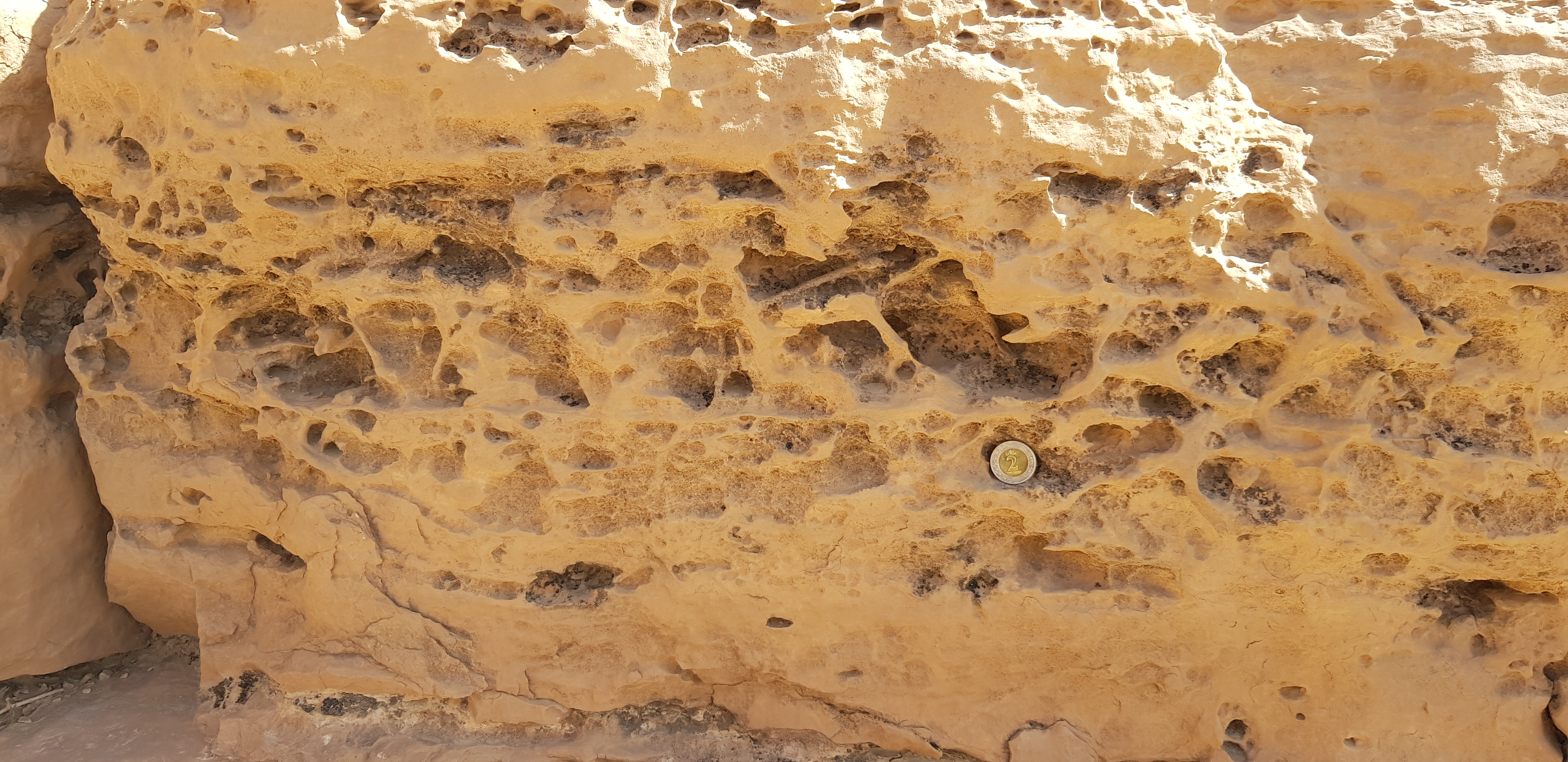Bioturbation Impact on Reservoir and Aquifer Properties
Bioturbation is a process involving organisms interacting with sediments, and the products of such a process, including biogenic and bioerosional sedimentary structures.
The biogenic structures include:
- Bioturbated structures: tracks, trails, burrows (Figure 1), and similar structures.
- Bio depositional structures: fecal pellets, pseudofeces, products of bioerosion, and similar structures.
- Biostratification structures: biogenic graded bedding, byssal mats, certain stromatolites, and similar structures.
Bioerosion sedimentary structures include borings, gnawings, scrapings, bitings, and related traces, along with other evidence of an organism’s activity (e.g., spider webs and egg cases). Many reports have shown that bioturbation could enhance or reduce reservoir quality. However, the impact of bioturbation on reservoir or aquifer properties depends on several factors, mainly bioturbation intensity and connectivity.

Highlights of Our Research
Bioturbation quantification through multiple integrated approaches:
- Quantitative variability of burrow percentage estimated from 2D views: example from Thalassinoides-bearing strata, central Saudi Arabia 1.
- Distinct Petroacoustic Signature of Burrow-Related Carbonate Reservoirs: Outcrop Analog Study, Hanifa Formation, Central Saudi Arabia 2.
- Understanding the permeability of burrow-related gas reservoirs through integrated laboratory techniques 3.
- Understanding the two-dimensional quantification of bioturbation intensity through computer modeling and statistical analysis 4.
Impact of bioturbation on reservoir properties (Outcrop analogue studies):
- Evidence for the development of a superpermeability flow zone by bioturbation in shallow marine strata, upper Jubaila Formation, central Saudi Arabia 5.
- Potential overlooked bioturbated reservoir zones in the shallow marine strata of the Hanifa Formation in central Saudi Arabia 6.
- The negative impact of Ophiomorpha on reservoir quality of channelized deposits in mixed carbonate-siliciclastic settings: The case study of the Dam Formation, Saudi Arabia 6.
- Spatial patterns variations of a burrowed carbonate stratum (ramp carbonates), Upper Jurassic Hanifa Formation, central Saudi Arabia 7.
Cite this post
If you found this post helpful, please consider citing it and the references below:
Alqubalee, A. (2025, April 7). Bioturbation Impact on Reservoir and Aquifer Properties. ALQUBALEE Notes. https://qubalee.github.io/posts/2025/04/bioturbation/
References
Eltom, H.A., and Alqubalee, A.M. (2022). Quantifying the bioturbation intensity of Thalassinoides-bearing strata in two- and three-dimensional views. Palaios. https://doi.org/10.2110/palo.2021.012 ↩︎
El-Husseiny, A., Eltom, H., Alqubalee, A., Abdlmutalib, A., Al-Mukainah, H., & Syahputra, R. N. (2022). Distinct Petroacoustic Signature of Burrow-Related Carbonate Reservoirs: Outcrop Analog Study, Hanifa Formation, Central Saudi Arabia. Natural Resources Research, 1-26. https://doi.org/10.1007/s11053-022-10097-w ↩︎
Eltom, H.A., Alqubalee, A.M., Sultan, A.S., Barri, A.A., Abdelbasit, K. (2021). Understanding the permeability of burrow-related gas reservoirs through integrated laboratory techniques. J. Nat. Gas Sci. Eng. 103917. https://doi.org/10.1016/j.jngse.2021.103917 ↩︎
Eltom, H.A., Alqubalee, A.M., Babalola, L. O. (2022). Understanding the two-dimensional quantification of bioturbation intensity through computer modeling and statistical analysis. International Journal of Earth Sciences. https://doi.org/10.1007/s00531-021-02102-z ↩︎
Eltom, H., Gonzalez, L., Alqubalee, A., Amao, A., Salih, M. (2020). Evidence for the development of a superpermeability flow zone by bioturbation in shallow marine strata, upper Jubaila Formation, central Saudi Arabia. Journal of Marine and Petroleum Geology, 104512. https://doi.org/10.1016/j.marpetgeo.2020.104512 ↩︎
Eltom, H., Alqubalee, A., Yassin, M. (2021). Potential overlooked bioturbated reservoir zones in the shallow marine strata of the Hanifa Formation in central Saudi Arabia. Journal of Marine and Petroleum Geology, 104798. https://doi.org/10.1016/j.marpetgeo.2020.104798 ↩︎ ↩︎2
Syahputra, M. R. N., Eltom, H. A., El-Husseiny, A., Kaminski, M. A., & Alqubalee, A. M. (2022). Spatial patterns variations of a burrowed carbonate stratum (ramp carbonates), Upper Jurassic Hanifa Formation, central Saudi Arabia. Sedimentary Geology, 435, 106146. https://doi.org/10.1016/j.sedgeo.2022.106146 ↩︎
![3D segmented CT scan of Thalassinoides network (Eltom and Alqubalee, 2022) [1] (Cover Image)](/assets/images_posts/Thalassinoides-ct.png)